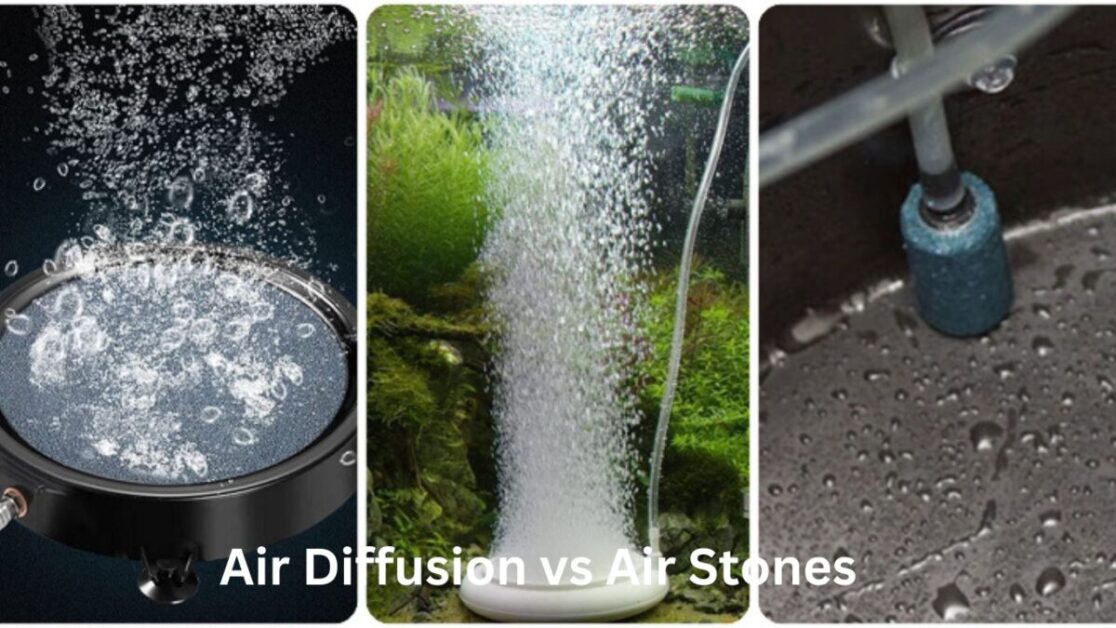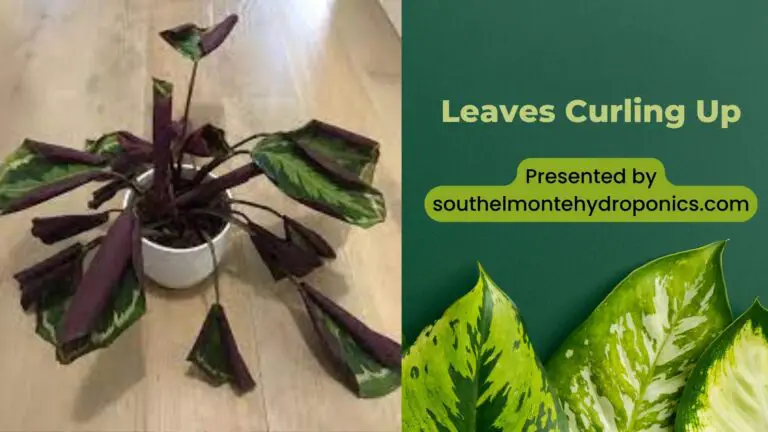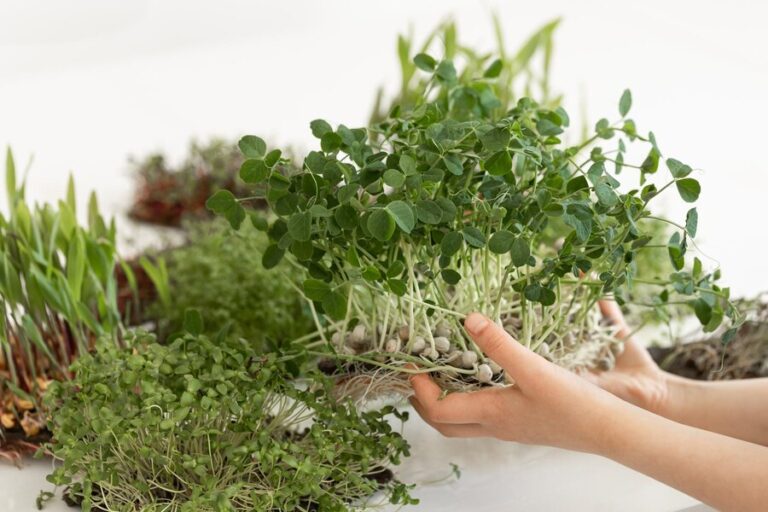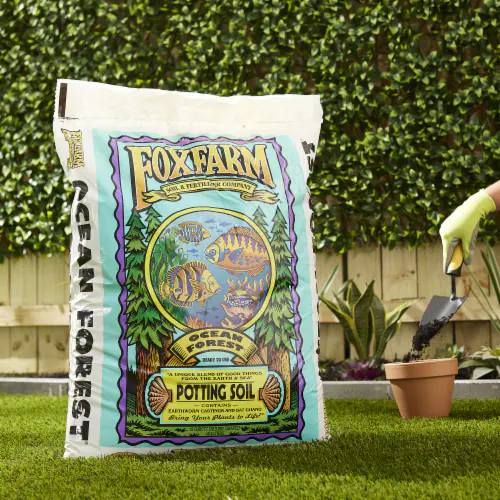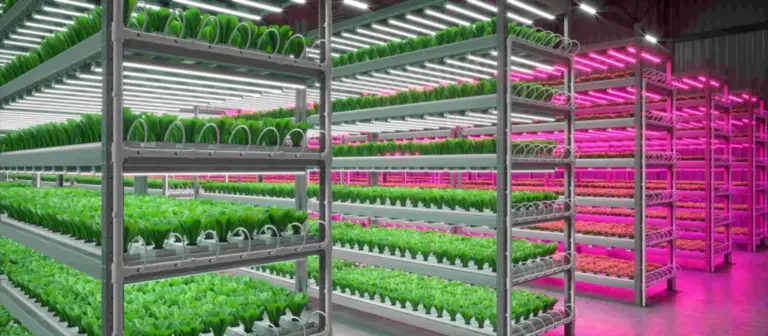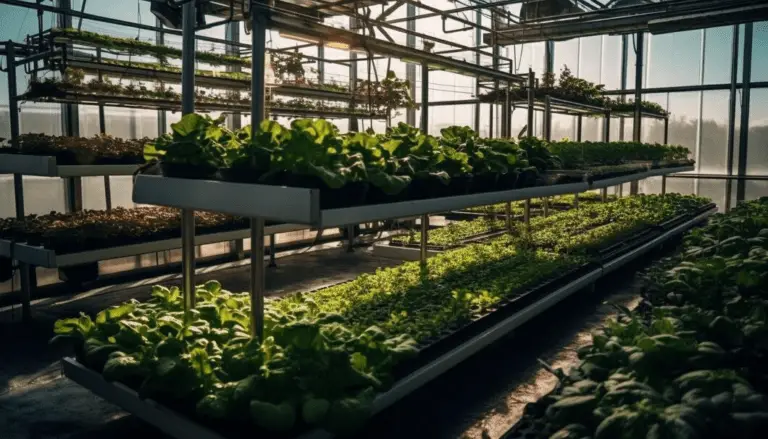Air Diffusion vs Air Stones for Hydroponics: Which One is Better for Your System?
Table of Contents
Air Diffusion vs Air Stones: Exploring different methods of oxygenation in hydroponics
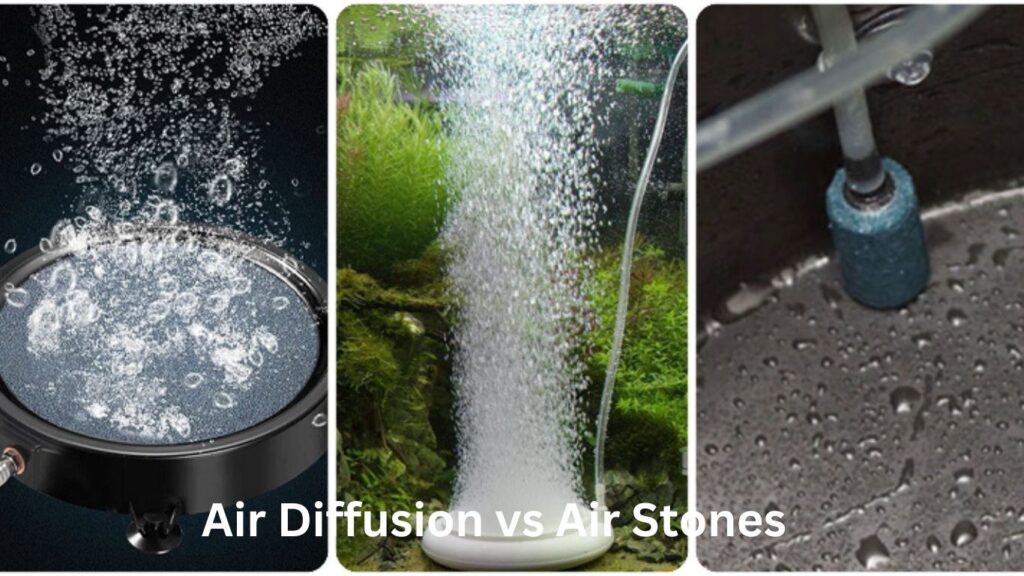
In the realm of hydroponics, oxygenation is a vital component for the success of your plants. It ensures that the roots receive an ample supply of oxygen to carry out essential processes like respiration and nutrient absorption. Several methods of oxygenation can be employed in hydroponic systems, each with its own advantages and considerations.
One popular method is air diffusion, which involves the use of air pumps and air stones to introduce oxygen into the nutrient solution. This method works by creating small bubbles of air that rise to the surface, thereby providing oxygenation to the roots. Air diffusion systems come in various sizes and designs, allowing for customization based on the specific needs of your hydroponic setup. However, it is important to consider factors such as system size, air pump capacity, and noise levels when choosing an air diffusion system to maximize its effectiveness.
The role of air diffusion vs Air Stones in hydroponic systems
Air diffusion plays a crucial role in hydroponic systems, ensuring that plants receive an adequate supply of oxygen. In these innovative growing setups, where plants are cultivated without soil, oxygen is essential for the proper development and growth of the roots. When oxygen levels are insufficient, plants may experience stunted growth, root rot, or other detrimental effects. This is where air diffusion vs Air Stones comes in, providing a consistent and efficient way to oxygenate hydroponic systems.
By introducing airstones or air diffusers into the nutrient solution, air diffusion allows for the release of small bubbles of oxygen. These bubbles rise to the surface, creating a gentle agitation that keeps the solution well-aerated. Through this process, the roots receive a continuous supply of oxygen, promoting healthy growth and nutrient uptake. Moreover, air diffusion also helps to prevent the buildup of carbon dioxide in the system, which can be detrimental to plant health in excessive amounts. Overall, air diffusion serves as a vital component in hydroponic systems, optimizing oxygenation and ensuring the success of the plants being cultivated.
Advantages of using air diffusion in hydroponics
Air diffusion is a highly beneficial method of oxygenation in hydroponics that offers numerous advantages. One key advantage is its ability to provide consistent and even distribution of oxygen throughout the hydroponic system. This is crucial for promoting healthy root development and preventing the occurrence of anaerobic conditions that can harm plant growth. By diffusing air, oxygen is effectively delivered to every part of the hydroponic system, ensuring that all plants receive the necessary oxygen they need for optimal growth and development.
Another advantage of using air diffusion in hydroponics is its ability to enhance nutrient uptake by plants. Adequate oxygen levels in the root zone promote the efficient absorption of nutrients, as oxygen is necessary for nutrient uptake and transport within the plant. When oxygen is properly diffused, plants can fully utilize the nutrients available in the hydroponic solution, leading to improved nutrient uptake efficiency and overall plant health. This is particularly beneficial in hydroponic systems where nutrient solution is continuously circulated, as it helps to prevent nutrient deficiencies and maximize nutrient utilization by the plants.
How air diffusion vs Air Stones works in hydroponic systems
Air diffusion plays a critical role in the oxygenation process within hydroponic systems. By introducing air into the nutrient solution, this method helps to replenish oxygen levels necessary for the root system’s health and optimal plant growth. The principle behind air diffusion is quite simple: as air bubbles rise through the water, they transfer oxygen from the surrounding air into the solution.
To achieve air diffusion in hydroponic systems, various devices and techniques are employed. One common method involves the use of air stones, which are porous rocks or ceramic diffusers that release small air bubbles when connected to an air pump. These bubbles rise through the solution, allowing oxygen to dissolve and be absorbed by the roots. Another approach is the implementation of air diffusers, which are specially designed devices that release a fine mist of tiny air bubbles into the nutrient solution. This mist creates a larger surface area for oxygen transfer, ensuring a more efficient oxygenation process within the hydroponic system. By employing these air diffusion techniques, growers can maintain an adequate level of oxygen in the nutrient solution, creating an environment conducive to healthy root development and overall plant vitality.
Factors to consider when choosing an air diffusion vs Air Stones system
When choosing an air diffusion system for your hydroponic setup, there are several factors to consider. First and foremost, you need to determine the size of your hydroponic system and how much oxygenation it requires. Different air diffusion systems have varying air output capacities, so matching the size of the system to the appropriate system is crucial for optimal oxygenation.
Secondly, you must consider the noise level of the air diffusion system. Some systems can be quite noisy, which may not be suitable for indoor gardening or for growers who prefer a quieter environment. Additionally, if you plan to place the system close to your living or working area, you would want to ensure that it doesn’t cause any disturbance. Therefore, selecting a system with low noise output is essential for maintaining a peaceful hydroponic environment.
Types of air diffusion vs Air Stones systems available for hydroponics
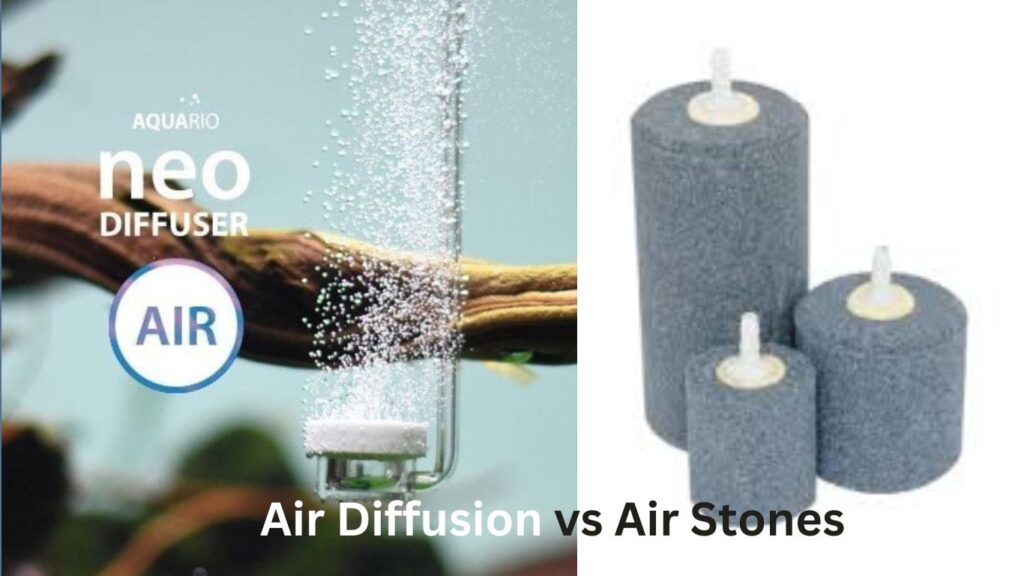
To ensure optimal oxygenation in hydroponic systems, there are various types of air diffusion systems available on the market. Each system offers unique features and benefits, allowing growers to customize their setup according to their specific needs.
One popular type of air diffusion system is the air stone. These small porous stones, often made of ceramic or synthetic materials, release tiny air bubbles when connected to an air pump. The bubbles rise to the surface, creating a constant agitation effect that helps distribute oxygen evenly throughout the nutrient solution. Air stones are easy to install and maintain, making them suitable for both small-scale and large-scale hydroponic setups. They offer an efficient way to increase dissolved oxygen levels and promote healthy root development in plants.
Another option for enhancing oxygenation in hydroponics is the use of diffuser discs or plates. These devices have a flat or circular shape and are designed with fine pores or perforations that release a steady stream of tiny air bubbles. The distribution of bubbles across the entire disc or plate creates a more uniform oxygenation pattern and helps prevent dead zones, where stagnant water can lead to the growth of harmful microorganisms. Diffuser discs and plates are known for their longevity and resistance to clogging, making them a reliable choice for hydroponic systems that require consistent and long-lasting oxygenation.
Benefits of using air stones in hydroponic systems
Air stones are widely recognized for their numerous benefits in hydroponic systems. Firstly, air stones greatly enhance oxygenation in the nutrient solution, which is vital for the healthy growth of plants. The constant release of small bubbles from the air stone provides a steady supply of oxygen to the roots, ensuring they remain well-oxygenated and promoting robust nutrient uptake. As a result, plants thrive and exhibit improved growth rates, higher yields, and enhanced overall health.
In addition to oxygenation, air stones also play a crucial role in maintaining a well-mixed and evenly distributed nutrient solution. The gentle agitation caused by the bubbles helps to prevent stagnant areas and enhances nutrient circulation throughout the system. This prevents the accumulation of harmful microorganisms, reduces the risk of nutrient imbalance, and ensures consistent nutrient delivery to all plants. Ultimately, the use of air stones helps to create an optimal growing environment, providing plants with the necessary oxygen and nutrients they need to flourish in a hydroponic setup.
How air stones enhance oxygenation in hydroponics
Air stones are an essential component in hydroponic systems as they greatly enhance oxygenation. By releasing a stream of fine bubbles into the nutrient solution, air stones increase the dissolved oxygen levels, ensuring that plant roots have access to an adequate supply for optimal growth. This enhanced oxygenation is vital for nutrient uptake, as it promotes the absorption of essential minerals and increases nutrient availability for plants. Additionally, the oxygen-rich environment created by air stones helps prevent the growth of harmful anaerobic bacteria that can negatively impact plant health in hydroponics.
Furthermore, air stones promote efficient nutrient circulation within the hydroponic system. As the bubbles rise, they create a gentle water movement, ensuring that nutrients are evenly distributed throughout the solution and reach all the plant roots. This constant circulation prevents stagnation and helps maintain a healthy root zone. In combination with proper aeration, air stones can significantly improve oxygen levels in the nutrient solution, providing an optimal environment for plants to thrive and achieve their full growth potential.
Factors to consider when selecting air stones for hydroponics
When it comes to selecting air stones for your hydroponic system, there are several factors to consider in order to maximize oxygenation efficiency. One important factor is the size of the air stone. A larger air stone will typically produce larger bubbles, which can lead to better oxygenation throughout the hydroponic growth medium. On the other hand, smaller air stones may produce smaller bubbles that can penetrate more deeply into the root zone, ensuring better oxygen supply to the plants’ roots. It’s essential to choose the size that aligns with your specific hydroponic setup and the needs of your plants.
Another factor to consider is the material of the air stone. There are different types of air stones available, such as ceramic, glass, and porous stones. Ceramic air stones are known for their durability and resistance to clogging, making them a popular choice among hydroponic enthusiasts. Glass air stones, although less common, can offer smoother airflow and better oxygenation. Porous stones, on the other hand, have microscopic pores that create finer bubbles, aiding in more efficient oxygen transfer to the root zone. It’s important to assess the advantages and drawbacks of each material and select the one that aligns with the specific requirements of your hydroponic system.
Comparing the effectiveness of air diffusion vs air stones in oxygenation
Air diffusion and air stones are both popular methods for oxygenating hydroponic systems. While both methods have the same goal of increasing dissolved oxygen levels in the nutrient solution, they differ in terms of their effectiveness and efficiency.
Air diffusion involves the use of air pumps and diffusers to generate small air bubbles in the nutrient solution. These bubbles rise to the surface, creating turbulence and agitation that promotes oxygen transfer from the air to the water. Air stones, on the other hand, are porous objects that release tiny air bubbles directly into the nutrient solution.
In terms of effectiveness, air diffusion systems have been shown to provide better oxygenation than air stones. This is because the smaller bubbles generated by air diffusers have a larger surface area, allowing for greater contact between the air and water, leading to more efficient oxygen transfer. In contrast, air stones produce larger bubbles that tend to rise quickly to the surface, resulting in less contact time with the water. Thus, air diffusion systems are generally considered to be more efficient in delivering oxygen to the roots of plants in hydroponic setups.
Understanding the limitations of air diffusion vs Air Stones in hydroponics
Air diffusion is a commonly used method of oxygenation in hydroponic systems. However, it is important to understand its limitations in order to optimize its effectiveness. One limitation of air diffusion is its inability to provide sufficient oxygenation in larger hydroponic setups. As the distance between the air diffuser and the plant roots increases, the oxygen molecules have a more difficult time reaching the roots, resulting in reduced oxygen levels and potential oxygen deprivation for the plants.
Furthermore, air diffusion may also be hindered by the presence of organic matter or mineral buildup in the hydroponic system. Over time, these materials can accumulate on the air diffuser and restrict the flow of air, reducing the overall effectiveness of oxygenation. This can lead to poor plant health and reduced yields. It is crucial to regularly clean and maintain the air diffuser to ensure optimal results.
Exploring the drawbacks of using air stones in hydroponic systems
Using air stones in hydroponic systems has its drawbacks that need to be considered. One major disadvantage is the possibility of clogging. Over time, air stones can become obstructed by mineral deposits, algae, or organic matter, reducing their effectiveness in oxygenating the nutrient solution. This can lead to uneven distribution of oxygen and nutrient uptake, negatively impacting plant growth and health. Regular cleaning and maintenance are essential to prevent clogging, increasing the overall workload for hydroponic growers.
Another drawback of air stones is their potential to introduce pathogens into the hydroponic system. The moist and warm environment created by the air stone can serve as a breeding ground for harmful microorganisms, such as bacteria and fungi. If not properly managed, these pathogens can spread throughout the system, causing diseases and reducing crop yields. It is crucial to implement strict sanitization protocols and monitor the water quality to mitigate this risk associated with air stones in hydroponics.
Considering the specific needs of your hydroponic setup
Each hydroponic setup has its own specific needs when it comes to oxygenation. Factors such as the size of the system, the type of plants being grown, and the nutrient solution being used can all impact the level of oxygenation required. It is important to carefully consider these factors in order to choose the right oxygenation method for your hydroponic system.
One important consideration is the volume of the nutrient solution. Larger systems may require a more powerful oxygenation method, such as air diffusion, to ensure that oxygen is delivered evenly throughout the solution. Smaller systems, on the other hand, may be adequately oxygenated with the use of air stones or other less powerful methods.
Additionally, the type of plants being grown should also be taken into account. Some plants, such as lettuce or herbs, have lower oxygen requirements compared to plants with larger root systems, such as tomatoes or peppers. Understanding the oxygen needs of your specific crops will help you determine the most suitable method of oxygenation for your hydroponic setup.
Choosing the right oxygenation method for your hydroponic system
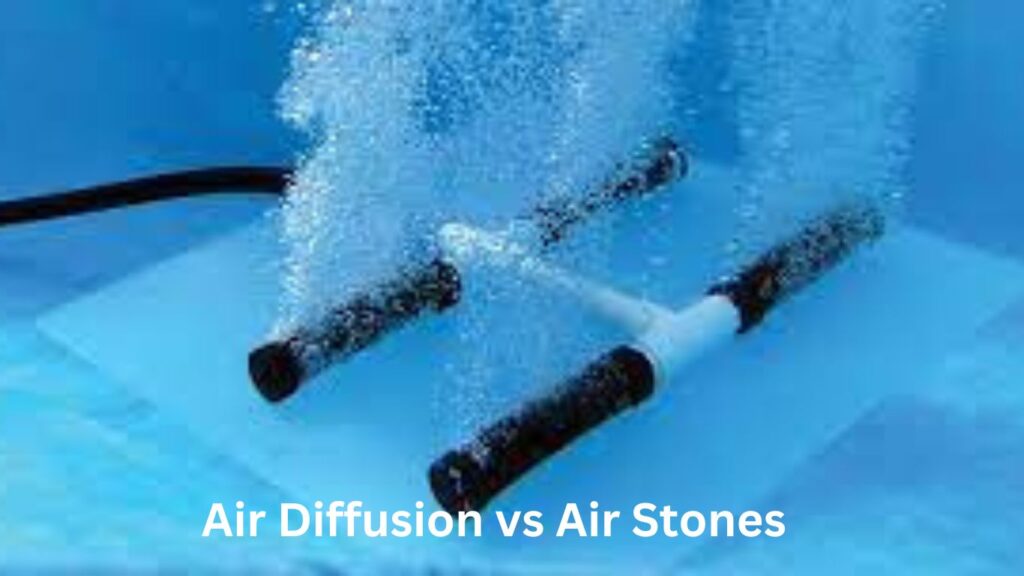
When it comes to choosing the right oxygenation method for your hydroponic system, there are several factors to consider. Each method has its own advantages and limitations, and selecting the most suitable one can greatly impact the success of your hydroponic garden.
One key consideration is the size and scale of your hydroponic setup. Larger systems may require more robust and powerful oxygenation methods, such as air diffusers or oxygen generators. On the other hand, smaller systems may benefit from simpler options like air stones or airstones with air pumps. Additionally, the type of plants you are growing and their specific oxygen requirements should also be taken into account. Some plants, like lettuce or herbs, may not require as high levels of oxygenation compared to more demanding crops like tomatoes or peppers.
To make an informed decision, it is crucial to assess your budget and the resources available to you. Some oxygenation methods may involve more initial investment or ongoing costs, such as electricity for running air pumps or maintenance for complex equipment. It is important to weigh these expenses against the potential benefits and improved growth and yield of your plants.
In conclusion, selecting the right oxygenation method for your hydroponic system is a crucial decision that can have a significant impact on the health and productivity of your plants. By considering factors such as system size, plant requirements, and available resources, you can make an informed choice that optimizes oxygenation efficiency in your hydroponic garden.
Certainly! Here are two tables comparing Air Diffusion vs Air Stones based on various factors commonly considered in aeration systems:
Table 1: Characteristics of Air Diffusion Systems
| Characteristics | Air Diffusion vs Air Stones Systems |
|---|---|
| Method of Aeration | Uses diffusers or porous materials to release air evenly throughout the growing medium or nutrient solution. |
| Aeration Pattern | Creates a more uniform distribution of air bubbles, promoting even oxygen availability to the roots. |
| Installation Complexity | Generally easier to install as it may involve placing diffusers in the growing medium or attaching them to the air pump. |
| Clogging Potential | May be less prone to clogging as diffusers are designed to release fine bubbles without large openings. |
| Energy Efficiency | Can be energy-efficient, especially in systems where diffusers are strategically placed for optimal air distribution. |
| Noise Level | Tends to be quieter compared to some air stone setups. |
| Maintenance | Requires regular cleaning to prevent clogging and maintain optimal performance. |
Table 2: Characteristics of Air Stones Systems
| Characteristics | Air Stones Systems |
|---|---|
| Method of Aeration | Uses porous stones to release bubbles into the nutrient solution or growing medium. |
| Aeration Pattern | Produces larger bubbles, providing a more localized source of aeration. |
| Installation Complexity | Installation involves placing the air stones in the nutrient solution or growing medium and connecting them to the air pump. |
| Clogging Potential | May be more prone to clogging, especially if the water contains debris or organic matter. Regular cleaning is necessary. |
| Energy Efficiency | Energy consumption can vary; it may be less efficient if the system is not well-designed for optimal bubble distribution. |
| Noise Level | Can be noisier, especially if large bubbles are produced. |
| Maintenance | Requires regular cleaning to prevent clogging, and the stones may need replacement over time. |
When choosing between air diffusion and air stones, factors such as the specific needs of your plants, the size and design of your hydroponic or aquaponic system, and personal preferences should be considered. Each system has its advantages and drawbacks, and the choice often depends on the goals and constraints of your particular setup.
Maximizing oxygenation efficiency in your hydroponic system.
To maximize oxygenation efficiency in your hydroponic system, it is important to consider several key factors. First and foremost, ensuring proper airflow is crucial. Adequate ventilation allows for the exchange of gases, preventing the buildup of carbon dioxide and ensuring a fresh supply of oxygen for your plants.
Another factor to consider is the use of air diffusion systems. These systems help disperse oxygen throughout the hydroponic solution, promoting even distribution and absorption by the plant roots. Air diffusion systems, such as air stones or diffusers, create small bubbles that increase the surface area available for gas exchange, enhancing oxygen transfer efficiency.
Additionally, paying attention to the oxygen saturation levels in the nutrient solution is essential. Monitoring dissolved oxygen levels using a dissolved oxygen meter or other appropriate tools helps maintain an optimal environment for root health and growth.
By optimizing airflow, employing air diffusion systems, and monitoring oxygen saturation levels, you can maximize the oxygenation efficiency in your hydroponic system. This will result in healthier, more productive plants and ultimately lead to a successful hydroponic gardening experience.
What is the role of oxygenation in a hydroponic system?
Oxygenation in a hydroponic system is crucial for the health and growth of plants. It ensures that the roots receive an adequate supply of oxygen, which is necessary for nutrient absorption and overall plant development.
How does air diffusion vs Air Stones work in hydroponic systems?
Air diffusion involves the use of air pumps or compressors to release oxygen into the nutrient solution. The oxygen bubbles rise to the surface, creating movement and circulation that allows the roots to absorb oxygen.
What are the advantages of using air diffusion vs Air Stones in hydroponics?
Air diffusion vs Air Stones promotes increased oxygen levels, prevents root suffocation, enhances nutrient uptake, and improves overall plant health. It also helps maintain a stable pH and discourages the growth of harmful pathogens.
What factors should I consider when choosing an air diffusion vs Air Stones system for my hydroponic setup?
Factors to consider include the size of your hydroponic system, the oxygenation requirements of your plants, noise levels generated by the air pump, energy consumption, and the durability and maintenance needs of the system.
What types of air diffusion vs Air Stones systems are available for hydroponics?
Common types of air diffusion vs Air Stones systems include air stones, air diffusers, and air pumps. Each of these systems has its own benefits and considerations, so it’s essential to choose one that suits your specific needs.
How do air stones enhance oxygenation in hydroponics?
Air stones break down air bubbles into smaller ones, increasing the surface area for oxygen exchange. They create a finer stream of oxygen bubbles, maximizing contact with the roots and enhancing oxygenation efficiency.
What factors should I consider when selecting air stones for my hydroponic system?
Consider the size of the air stones, the oxygenation requirements of your plants, the compatibility with your air pump, and the ease of cleaning and maintenance.
Can you compare the effectiveness of air diffusion and air stones in oxygenation?
Both air diffusion and air stones are effective methods of oxygenation in hydroponics. Air stones offer enhanced oxygenation efficiency due to the finer bubbles they produce, but the choice depends on the specific needs of your hydroponic setup.
Are there any limitations to air diffusion in hydroponics?
While air diffusion is effective, it may not provide sufficient oxygenation in larger hydroponic systems. Additional measures like using multiple air pumps or employing alternative oxygenation methods may be necessary in such cases.
What are the drawbacks of using air stones in hydroponic systems?
Air stones can become clogged with mineral deposits over time, affecting their oxygenation efficiency. Regular cleaning and maintenance are required to prevent blockages and ensure optimal performance.
How can I choose the right oxygenation method for my hydroponic system?
Consider factors such as the size of your system, the oxygenation requirements of your plants, your budget, and the ease of maintenance. It’s also helpful to seek advice from experienced hydroponic growers or professionals.
How can I maximize oxygenation efficiency in my hydroponic system?
To maximize oxygenation efficiency, ensure proper air pump sizing, regularly clean air stones or diffusers, maintain optimal water temperature, avoid overstocking your system, and monitor oxygen levels using appropriate testing equipment.

